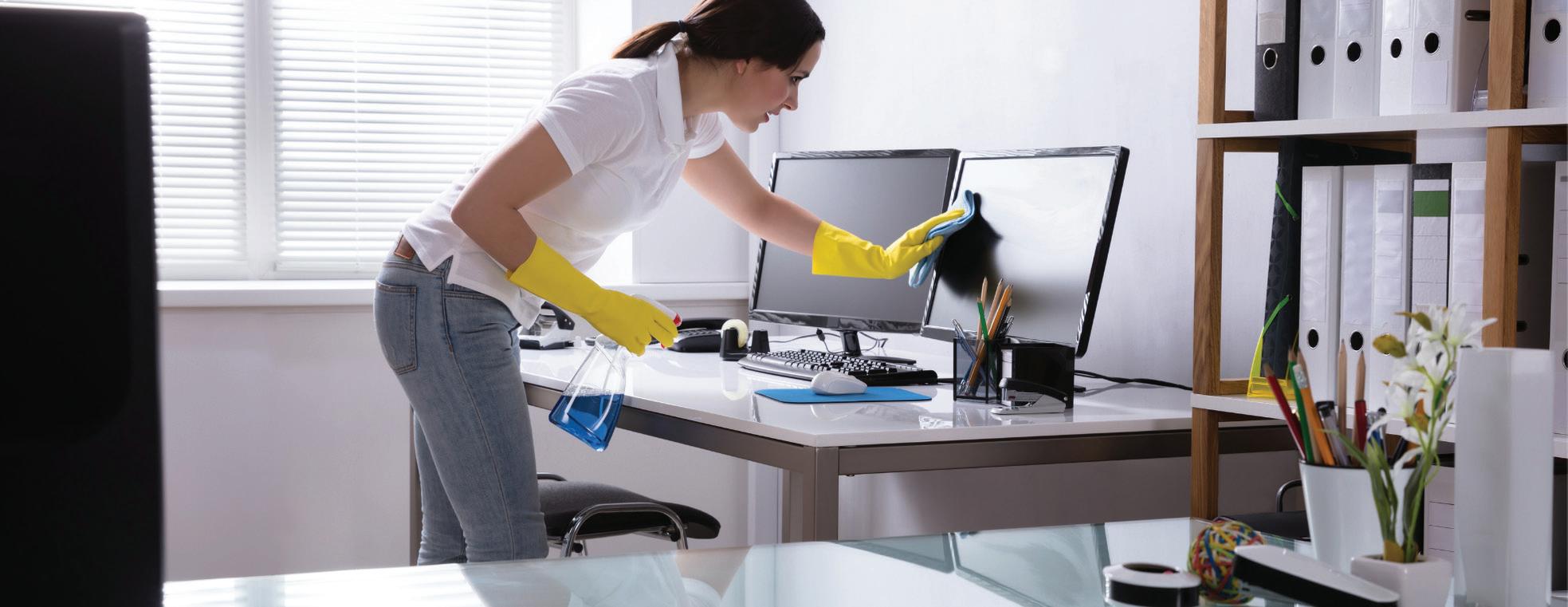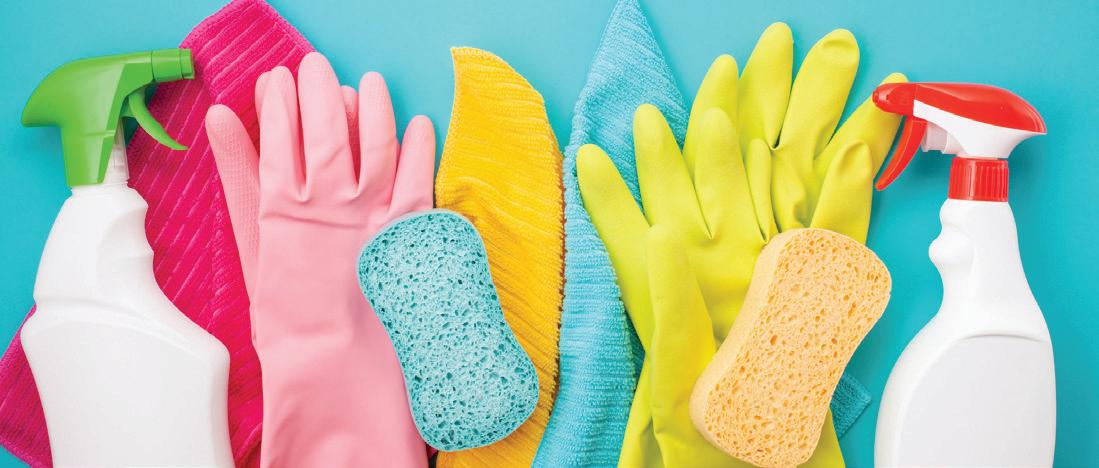
7 minute read
COVID-19
ONE (OR TWO) KEY PROPERTY LOSS PROVISION(S) ATTORNEYS KEEP FORGETTING
Are you tired of talking about COVID? I am. Are you as tired of the COVID business income coverage debates? I am.
Advertisement
Because I’m so worn out, this article focuses on ONE, ok two, key policy provisions every attorney and most judges seem either to forget or are purposely ignoring. Maybe it is because these provisions apply only when two conditions meet:
The policy does not contain a virus exclusion; and The court holds that the presence of the virus ON the surface of the property qualifies as “direct property damage.” A judge in Ohio recently denied one insurance carrier’s request for dismissal in two separate suits because both conditions were present.
Cuyahoga County Court of Common Pleas Judge Maureen Clancy allowed the argument that the presence of the virus on the property caused damage. Plaintiff attorneys contend that is was essentially the same as smoke damage. Thus, the presence of the virus on the surfaces (if it can be proven) results in direct property damage triggering the property policy and business income coverage to respond. More detail on this discussion and decision can be found in the Claims Journal article, The Key to Winning COVID BusinessInterruption Claims: Say the Virus is Present.
Although this seems to be an unusual allowance, it must now be addressed.
In reality, this accusation is quite easy to defeat. Well, the intent is not really “defeating” the ruling, but rather to use the ruling to prove that little to nothing is owed by the insurance carrier, even if the presence of a virus is similar to smoke.
Business Income Truism
One fact about business income coverage rarely discussed during these “COVID court days” is that business income is not stand-alone coverage. Business income is triggered only when there is first a direct loss to property. At least two judges to this point have seemingly ignored the generally understood meaning of “damage” applied by most courts – a change in the physical condition necessitating repair - holding that presence of the virus causes direct damage to the property.
If direct damage has occurred, business income coverage can be triggered.
Policy Conditions
Within insurance contracts there are policy conditions. Some are “conditions precedent” and others are “conditions subsequent.”
“Conditions precedent” are conditions the insured must comply with BEFORE a loss occurs to assure coverage is available WHEN a loss occurs (i.e. being truthful in the application, paying the premium, etc.). “Conditions subsequent” are conditions that must be complied with AFTER the loss to protect coverage (i.e. reporting the loss and providing a proof of loss). Violation of a condition subsequent can negatively affect coverage, up to and including voiding coverage.
Two “conditions subsequent” found in ISO property policies apply specifically to the claim that the presence of a virus on the surface causes direct property damage. These read:
3. Duties In The Event Of Loss Or Damage
a. You must see that the following are done in the event of loss or damage to Covered Property:
(4) Take all reasonable steps to protect the Covered Property from further damage, and keep a record of your expenses necessary to protect the Covered Property, for consideration in the settlement of the claim. This will not increase the Limit of Insurance. However, we will not pay for any subsequent loss or damage resulting from a cause of loss that is not a Covered Cause of Loss. Also, if feasible, set the damaged property aside and in the best possible order for examination.
(6) As often as may be reasonably required, permit us to inspect the property proving the loss or damage and examine your books and records.
Also, permit us to take samples of damaged and undamaged property for inspection, testing and analysis, and permit us to make copies from your books and records.
Notice that the insured MUST take reasonable steps to protect the covered property from further damage. What does this entail in the case of or in the presence of a virus? Cleaning the surface.
Once the surface is cleaned, there is no more damage. If there is no longer damage, the period of restoration ends. Once the period of restoration ends, there is no longer a covered business income loss. This is how the policy is designed.
How long does it take to clean the property to repair the “damage”? The answer depends on the size and complexity of the building. One to three days maybe? Most ISO-based business income policies have a 72-hour deductible, so if the property is cleaned within 72 hours, the virus that caused the “property damage” is no longer present, thus there is no longer damage. Once the damage is repaired, business income is no longer owed.
(Side note: Many scientific studies have concluded that the virus is viable on most surfaces for between one to three days; so even if it’s not cleaned, there is no “damage” after three days.)
Sub-paragraph a.(6) above is fascinating. The insured is required to allow the insurance carrier to take samples for testing. If no virus is detected by these tests, how is the loss proven? The insured cannot simply say that the virus is present, some proof must be provided by the insured, and the insurance carrier must be allowed to undertake its own tests to prove the insured’s assertion.
The ability of the insurance carrier to undertake these tests is reasonable when coverage is written on a “risk of direct physical loss basis” (“all risk” as the courts like to call it). Remember, when coverage is written on a “risk of direct physical loss” basis the insurance carrier has to prove coverage does not apply. How can the carrier prove it if they are not allowed to test?
Policy Conditions Matter
Insurance policies are contracts that place specific requirements on both parties to the contract – the insurer and the insured. If either party violates any of the policy conditions, remedies are available to the harmed party.
The insured is required to comply with these “conditions subsequent.” If the insured does not comply, the insurance carrier has the right to a remedy – up to and including the denial of coverage. from further “damage” by cleaning it, they have violated a condition of the policy. But this matters only if they can prove the virus is present. Some testing must be done for proof to exist – and the insurance carrier is allowed to test. Only while the virus is causing “damage” does the period of restoration exist. Once the virus is no longer viable or is removed, it is no longer “damaging” the property and the period of restoration ends. Once the period of restoration ends, business income payments end.
What the Carrier Owes
As stated previously, business income coverage is triggered only when there is direct property damage. If/when the insured proves that the virus is ON the property (and thus is causing “damage”), the insurance carrier owes the cost of cleaning the premises.
If it takes longer than 72 hours (or whatever the subject business income policy’s time deducible is) to clean the premises (ultimately “repairing” the “damage”) the insurance carrier owes the loss of income during the time of the “repair” – only. If the insured cannot reopen because of a governmental order, that is still excluded because of other provisions in the policy (re-read condition a.(4), paying attention to the “subsequent loss” wording).
But if there is no virus detectible, there is nothing to clean and no “damage.” In this case, the insurance carrier owes nothing.

It’s a Good Try, But Nothing is Gained
While the effort expended by plaintiff’s attorneys is understandable and even admirable, nothing is netted for the insured using the argument that a virus compares to smoke and is causing damage. The “damage,” if there is any, is temporary and “repaired” by cleaning (a policy condition) or ceases at the loss of the virus’ viability (death). Further, the insurance carrier has the right to test for the presence of the virus to prove it is present.
If the insured fails to comply with these two conditions, the insurance carrier is within the rights granted by the contract to apply the relief allowed.
(Note: Policy language used in this article is ISO language from the CP 00 10 10 12.)
> Chris Boggs
IIABA Executive Director of Risk
Management and Education










